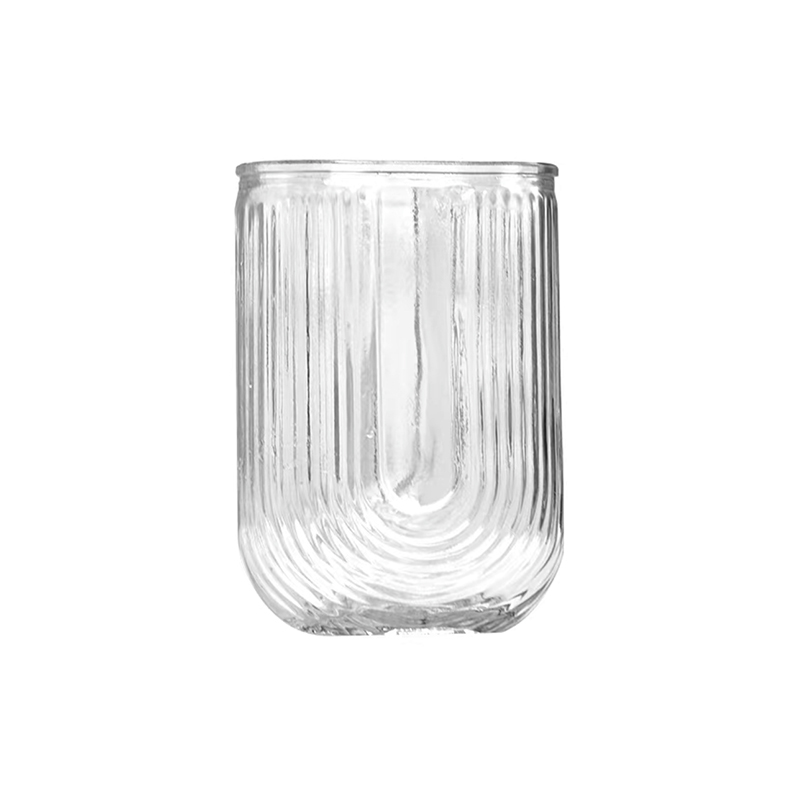How to properly clean glass vacuums to maintain their transparency and gloss?
Proper cleaning of glass vases is the key to maintaining their transparency and luster. Here are some detailed steps and tips to help you complete the cleaning work easily:
Prepare tools and materials
Before you start cleaning, prepare the following tools and materials:
Warm water
White vinegar or lemon juice (natural stain remover)
Baking soda (mild abrasive)
Dishwashing liquid or special glass cleaner
Soft sponge, soft cloth or special glass cleaning brush
Old toothbrush (for cleaning hard-to-reach areas)
Clean dry towel or paper towel
Basic cleaning steps
Empty the vase and rinse
If there is residual water or floral mud in the vase, first turn the vase upside down and gently pour out the residue.
Rinse the inside of the vase thoroughly with warm water to remove dust and loose dirt on the surface.
Make a cleaning solution
Method 1: White vinegar + baking soda
Add a small amount of white vinegar (about 1:3 ratio) to warm water, then sprinkle a small spoonful of baking soda and stir well. This solution can effectively remove scale and stubborn stains.
Method 2: Dishwashing liquid + warm water
Drop a few drops of dishwashing liquid into warm water and stir well. This method is suitable for daily cleaning.
Method 3: Lemon juice + salt
If there is slight scale on the inner wall of the vase, you can use lemon juice mixed with a small amount of salt to make a natural cleaner.
Soak the vase
Put the vase in the cleaning solution and soak it for 10-15 minutes to soften the dirt. If the vase is too large to be completely soaked, fill the inside of the vase with the solution.
Clean the inner wall

Use a soft sponge or a special glass cleaning brush to gently wipe the inner wall of the vase. For slender vases or styles with narrow necks, you can dip an old toothbrush in the cleaning solution to deeply clean hard-to-reach areas.
If you encounter stubborn scale, you can sprinkle some baking soda on a damp cloth and wipe it gently.
Rinse it clean
Rinse the vase with clean water several times to ensure that all detergents and dirt are thoroughly removed.
Drying and polishing
Drying: Use a clean soft cloth or paper towel to thoroughly dry the inside and outside of the vase to avoid leaving water stains.
Polishing: To increase the gloss, you can gently wipe the surface of the vase with a microfiber cloth to make it more crystal clear.
Special Cases
Scale Problem
If a lot of scale has accumulated on the inner wall of the vase, you can use white vinegar to pour directly into the vase and let it sit for several hours before cleaning.
Or use a commercial descaling agent and follow the instructions.
Grease or Fingerprints
For grease or fingerprints on the outer wall of the glass vase, you can spray a small amount of alcohol or glass cleaner on the surface and then wipe it clean with a soft cloth.
Frosted or carved glass vases
Frosted or carved glass vases are more likely to harbor dirt. Avoid using hard brushes when cleaning to avoid scratching the surface.
You can use a soft cloth dipped in a diluted white vinegar solution and gently wipe the textured part.
Daily Maintenance Recommendations
Regular Cleaning: Clean the vase in time after each use to prevent dirt accumulation.
Avoid scratching with hard objects: Do not use steel wool or other rough tools to clean glass vases to avoid scratches.
Storage Notes: Glass vases that are not used for a long time should be stored in a dry place to avoid dust accumulation or moisture.
Prevent sudden cold and hot: Glass materials are easily broken by temperature changes, so avoid pouring hot liquids directly into cold vases.
With the above methods, you can easily clean glass vases and maintain their transparency and gloss. Regular and careful care will not only make the vase look brand new, but also extend its service life!


 English
English Español
Español












